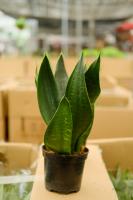Introduction
Water is an essential resource required for the growth and survival of plants. The movement of water in plants is a continuous process that in part, involves the transportation of water. In this article, we will explore when plants transport water in the water cycle.
Role of Water in Plants
Water is a vital component for photosynthesis, the process that allows plants to manufacture food. Without water, the plant cannot photosynthesize, resulting in stunted growth, and ultimately, death. Water is also essential for maintaining the structure of plant cells, and it helps in the regulation of plant temperature.
The Water Cycle
The water cycle refers to the journey that water takes between the Earth and the atmosphere. It includes processes such as evaporation, precipitation, and transportation. Water evaporates from the Earth's surface (oceans, lakes, and rivers), then forms clouds in the atmosphere. The clouds eventually produce precipitation (rain, snow, and hail), which falls back to the Earth's surface.
Transportation of Water in Plants
The transportation of water in plants occurs through a system of tubes called xylem. The xylem is responsible for the movement of water and other nutrients from the roots of the plant to the leaves. The movement of water is a result of transpiration, which is the loss of water vapor from the leaves of the plant.
When Do Plants Transport Water?
Plants transport water through the xylem system continuously. However, there are specific periods when the water transport rate is higher. One of such periods is during photosynthesis. During photosynthesis, the plant uses water to manufacture food, and as such, water transport is more active during this period.
Another period when plants transport water is during hot and dry weather. During such weather, plants lose water through transpiration at a faster rate than they absorb it through the roots. As a result, the plant increases water uptake to maintain the necessary internal water balance.
The Importance of Water Transport in Plants
Water transport in plants is essential for the survival of plants. Without water, plants cannot manufacture food, grow or even survive. Water also plays a vital role in the regulation of plant temperature, and it helps in maintaining the structural stability of plant cells.
Conclusion
In conclusion, plants transport water through the xylem system as part of the continuous process of the water cycle. Photosynthesis and hot and dry weather are periods when water transport in plants is more active. Water transport is essential for plant survival, and it plays a vital role in plant growth, food production, and cell function.

 how many times do yo...
how many times do yo... how many planted tre...
how many planted tre... how many pine trees ...
how many pine trees ... how many pecan trees...
how many pecan trees... how many plants comp...
how many plants comp... how many plants can ...
how many plants can ... how many plants and ...
how many plants and ... how many pepper plan...
how many pepper plan...






























